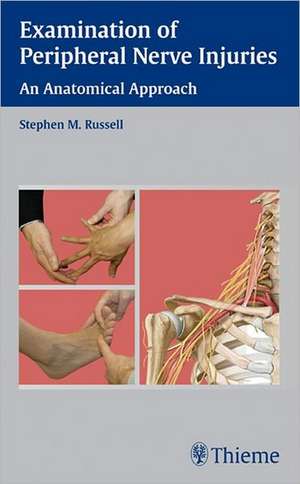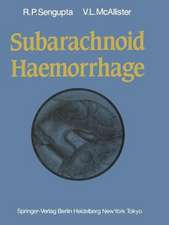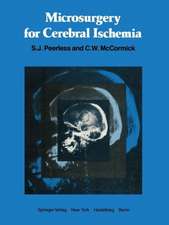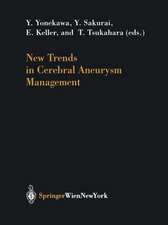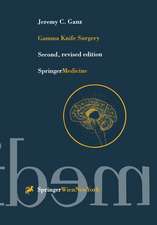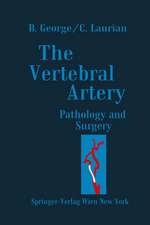Examination of Peripheral Nerve Injuries: An Anatomical Approach
Autor Stephen Russellen Limba Engleză Paperback – 7 noi 2006
Highly Commended in Neurology by the British Medical Association, 2007
This book is an anatomically based guide to locating and diagnosing peripheral nerve entrapment and injuries, complete with all the fundamental science concepts and diagnostic techniques the clinician needs to address injuries in the upper and lower extremities of the body. Full-color photographs and easy-to-digest schematic illustrations aid the comprehension of complex anatomy and its variations, and help the reader learn the examination techniques described in the book.
Highlights:
This book is an anatomically based guide to locating and diagnosing peripheral nerve entrapment and injuries, complete with all the fundamental science concepts and diagnostic techniques the clinician needs to address injuries in the upper and lower extremities of the body. Full-color photographs and easy-to-digest schematic illustrations aid the comprehension of complex anatomy and its variations, and help the reader learn the examination techniques described in the book.
Highlights:
- Step-by-step descriptions supplemented by 150 full color illustrations and photographs guide the reader through the examination techniques
- Thorough review of the anatomy of each peripheral nerve helps the reader gain a firm understanding of normal structure essential for recognizing and diagnosing injury
- Emphasis on the most common anatomical variations in the peripheral nervous system prepares the reader for the full range of clinical scenarios
- Descriptions of the brachial and lumbosacral plexi in the context of their major branches allows the reader to fully grasp complicated structures
Preț: 404.32 lei
Preț vechi: 425.61 lei
-5% Nou
Puncte Express: 606
Preț estimativ în valută:
77.46€ • 81.55$ • 63.94£
77.46€ • 81.55$ • 63.94£
Carte indisponibilă temporar
Doresc să fiu notificat când acest titlu va fi disponibil:
Se trimite...
Preluare comenzi: 021 569.72.76
Specificații
ISBN-13: 9781588904836
ISBN-10: 1588904830
Pagini: 192
Ilustrații: 150
Dimensiuni: 127 x 203 x 9 mm
Greutate: 0.25 kg
Ediția:1st edition
Editura: Thieme
Colecția Thieme
ISBN-10: 1588904830
Pagini: 192
Ilustrații: 150
Dimensiuni: 127 x 203 x 9 mm
Greutate: 0.25 kg
Ediția:1st edition
Editura: Thieme
Colecția Thieme
Recenzii
This book is written succinctly, remains comprehensive in scope, and is exceptionally well organized, easy to read, and well illustrated. This book is similar to Greenberg's Handbook of Neurosurgery in which the essentials are distilled and concisely presented. The anatomy, function (as shown by the clinical examination), and clinical syndromes are described beautifully using a combination of text, schematic illustrations, and photographs of subjects under actual examinations. In summary, this gem of a book provides both the novice and seasoned clinician with a means of rapidly learning and reviewing the essentials of peripheral nerve anatomy and function in an extremely succinct and well-organized form. It is aptly named and its price ($49.95) makes it a bargain. It can be conveniently carried in one's coat or jacket pocket where it deserves to be.--Journal of NeurosurgeryCareful focus to detail and the wealth of information useful for the trainee or for the more experienced clinician wishing a little refreshing of knowledge.--Journal of Hand SurgeryThis book is well organized, user friendly, and is small and light enough to fit into the pocket of a lab coat. The photographs and illustrations help to clearly convey salient concepts. ..An excellent reference.--Journal of Orthopaedic & Sports Physical TherapyA very effective book for the evaluation of nerve deficits associated with trauma. The sequences of examination are given in a well integrated and logical fashion. The photographs of the examination maneuvers are truly instructive, and add up to the best gallery of such illustrations I have seen. ..Recommend[ed]..to anyone learning or teaching the diagnosis of peripheral nerve injuries.--MicrosurgeryHigh-quality illustrations..easy to read through and understand.--Doody's Book Reviews
Notă biografică
Department of Neurosurgery, New York University School of Medicine, New York, NY, USA
Textul de pe ultima copertă
Highly Commended in Neurology by the British Medical Association, 2007
This book is an anatomically based guide to locating and diagnosing peripheral nerve entrapment and injuries, complete with all the fundamental science concepts and diagnostic techniques the clinician needs to address injuries in the upper and lower extremities of the body. Full-color photographs and easy-to-digest schematic illustrations aid the comprehension of complex anatomy and its variations, and help the reader learn the examination techniques described in the book.
Highlights:
This book is an anatomically based guide to locating and diagnosing peripheral nerve entrapment and injuries, complete with all the fundamental science concepts and diagnostic techniques the clinician needs to address injuries in the upper and lower extremities of the body. Full-color photographs and easy-to-digest schematic illustrations aid the comprehension of complex anatomy and its variations, and help the reader learn the examination techniques described in the book.
Highlights:
- Step-by-step descriptions supplemented by 150 full color illustrations and photographs guide the reader through the examination techniques
- Thorough review of the anatomy of each peripheral nerve helps the reader gain a firm understanding of normal structure essential for recognizing and diagnosing injury
- Emphasis on the most common anatomical variations in the peripheral nervous system prepares the reader for the full range of clinical scenarios
- Descriptions of the brachial and lumbosacral plexi in the context of their major branches allows the reader to fully grasp complicated structures
Descriere
This book is an anatomically based guide to locating and diagnosing peripheral nerve entrapment and injuries, complete with all the fundamental science concepts and diagnostic techniques the clinician needs to address injuries in the upper and lower extremities of the body.
Cuprins
1 Median Nerve
2 Ulnar Nerve
3 Radial Nerve
4 Brachial Plexus Anatomy
5 Clinical Evaluation of the Brachial Plexus
6 Sciatic Nerve
7 Inguinal Complex of Nerves
8 Lumbosacral Plexus
